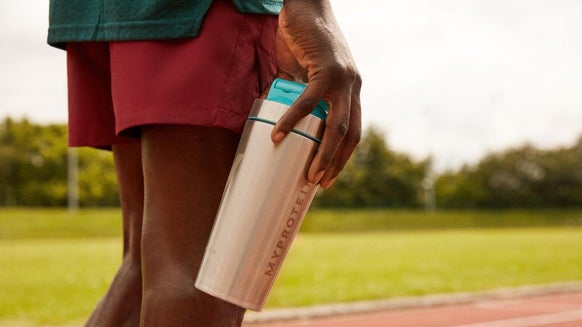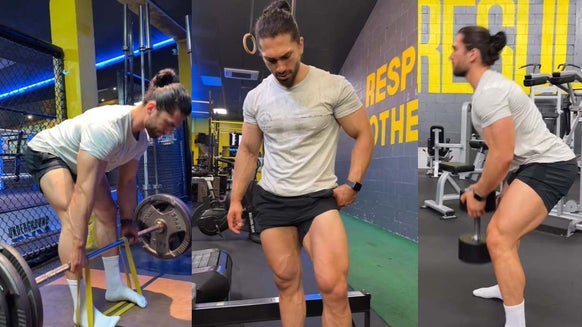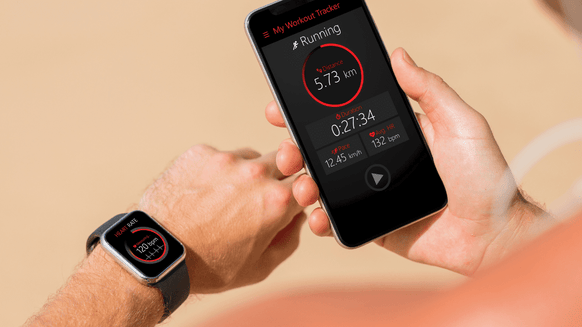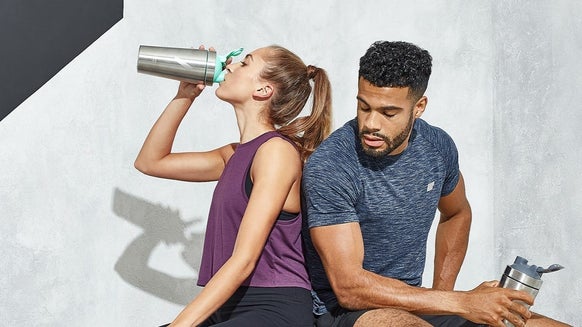How should a beginner start lifting weights?
If you’re feeling confident enough, free gym intro sessions or strength-based classes which teach effective movements can be used as a foundation to your own training sessions.
When starting, it’s effective to use a mixture of free weights as well as gym machines. This challenges the body and gets a variety of movement patterns into your workouts.
How much weight should you lift?
Once you’ve found the correct weight, you can start adding sets — aiming to be able to perform 3 sets of 10-15 reps. The weight should be challenging by the end but your form should be consistent.
What are reps and sets?
Reps stands for the number of repetitions you need to do of the stated exercise. This will be determined by your goal, endurance-based training will have a rep range of 12-20, hypertrophy 12-8reps, strength 4-8 reps, and power 1-4 reps. Sets stands for the number of grouped repetitions you need to do, so if you are performing 15 repetitions twice round this would be considered as 2 sets.
There’s normally a rest period between sets whereas reps do not have a rest until complete (the end of the set).
How many days a week should a beginner lift weights?
Weightlifting routine for beginners
Ready to try weightlifting but not sure what exercises or routine to use?We’ve pulled together an easy to follow routine for beginners. Using a full body workout across the week, can be a great way to maximise time and results as a beginner:
Full body workout 1
Barbell Squats - 3 sets of 8-10 reps
- With the barbell on your back across your shoulders, and feet hip-width apart, keep your head up, back straight, and drive your bum back and down.
- Continue to lower down until your hips are in line with your knees at 90 degrees. Hold at the bottom of the movement for 1-2 secs before driving through your feet into the floor to push yourself back up.
- Repeat to the required reps and re-rack the barbell at the end of the set.
Bent over row - 3 sets of 10-12 reps
- Stand with your feet hip-width apart. Bend your knees and hinge from your waist, your back should remain straight, neck in line with your spine.
- Take hold the barbell with hands placed shoulder-width apart. Palms facing downwards, arms straight, and with soft elbows.
- Brace your core, squeezing your shoulders together to row the weight up until it touches your sternum.
- Slowly lower the bar back down again, and repeat.
Romanian deadlifts - 3 sets of 10-12 reps
- Stand with your feet shoulder-width apart. Bend the knees slightly so they’re soft but keep them stationary and take hold of the barbell with an overhand grip and bringing it up to your thighs.
- Engage your core and pull your lats back and down.
- Start to lower the barbell by hinging at the hip and keeping your back straight.
- When the barbell is below your knee, level with your shin, drive your hips forward and through bringing your body back up to starting position.
- Repeat to complete the set and lower the barbell with control to finish.
Bench press - 3 sets of 10-12 reps
- Lie down on a bench and set your hands shoulder-width apart on the bar.
- Pinch your shoulder blades together driving them into the bench. Take a deep breath and lift the bar up above the chest with your arms extended.
- Slowly lower the bar to the base of your sternum, bending at the elbow. Just before the bar touches your chest, drive it back up by extending the elbows, squeezing your pectorals, and driving your feet into the ground.
Bicep curls - 3 sets of 15 reps
Stand with your feet hip-width apart, holding a dumbbell in each hand and backs of your hands resting on the thigh. - Engage your core, and start the movement by bending at the elbow slowly raising the dumbbells up towards the chest.
- Once the dumbbells are at shoulder height slowly return but to start.
- Avoid swinging your hips to help the movement.
Triceps kickbacks - 3 sets of 15 reps
- Stand with your feet hip-width apart, holding a dumbbell in each hand, palms facing inwards and hands at your side.
- Lean your torso forward slightly and pull the dumbbells up to your chest by bending at the elbow and engaging your back. Hold this position then slowly drive your hands behind you to straighten the arm.
- Once straight, hold for a second and then return to starting position.
- If you find yourself unable to do both arms at the same time then drop to single arm.
Full body workout 2
Deadlifts- 3 sets of 8-10 reps
- Position your feet hip-width apart. Bring your shoulders over the barbell and hinge at the hip to take hold of it. Drive your bum down towards the floor, contract your lats, pulling them back and down, and lift your chest to set you back.
- Take a deep breath in, brace your core, and drive through the floor with your legs, keep the bar tight to your body as you lift it off the ground.
- Lock your hips out at the top, engaging your quads, glutes, and lats.
- Maintain tension through your core, hinge from your hip, and return to the starting position in a controlled lowering movement.
- Repeat to complete the set.
Single arm dumbbell row
3 sets of 10-12 reps each arm.
- Place your left knee and left hand on a bench to support your body while you hold a dumbbell in the right hand and the right leg drives into the floor.
- Keep the arm with the dumbbell long at the side of your body, draw your rib cage up and roll your shoulder back and down.
- Start the movement by pulling the weight up towards the chest, bending at the elbow.
- Once the dumbbell reaches chest height, hold, and then return.
- Complete the reps and then switch to the other side.
Barbell Lunges
3 sets of 8-10 reps
- Position a barbell across your shoulders, hands in a wide grip on the bar to stabilise, and feet hip-width apart.
- Step forward with one leg, engaging your core and start the movement by squatting down through your hips.
- Keep your upper body straight and head up.
- Once both knees are at a 90 degrees hold for a second before pushing yourself back to the starting position by driving through your heels.
- Step the other leg forward and continue to repeat in an alternating pattern to complete the set.
Chest flys
3 sets of 10-12 reps
- Lie down flat on a bench holding dumbbells in your hands and drive them up so your arms are extended up over your face.
- Take a deep breath and start slowly lowering the dumbbells out to either side of your chest.
- When they’re in line with your chest, drive it back up by squeezing your pectorals and driving your feet into the ground.
Overhead Triceps extensions
- Standing with feet hip-width apart, shoulders back and down, lift your chest.
- Hold a dumbbell between both hands and raise it straight above your head.
- Tuck your elbows tight to your ears and start the movement by bending at the elbow and lowering the weight behind your head until your elbows reach 90-degrees.
- Drive the weight back up above your head squeezing your triceps at the top.
- Repeat to complete the set.
Hammer curls
- Stand with feet hip-width apart, shoulders back and down.
- Hold a dumbbell in each hand by the side of your body, palms facing in.
- Tuck your elbows tight to the body and start by curling the dumbbells up towards your chest, bending at the elbow.
- Try not to move the hips and keep your arms tight to your body.
- When you reach chest height hold for a second before lowering with control and repeat to complete the set.
Advice for beginner weightlifters
1. Focus on achieving proper form
It’s ok to work to the point that form starts to breakdown, this is how we know our muscles are working, but once this point is reached it’s time to stop and rest.
2. Slow and steady
It’s also important to take your time when moving through a program or working towards goals.
3. Sets, Reps and Weight
4. Keep moving when resting
Take Home Message
No matter your reason to want to start weightlifting there is no time like, with so many benefits such as improved physical and mental health it’s a must for anyone.
READ THESE NEXT:
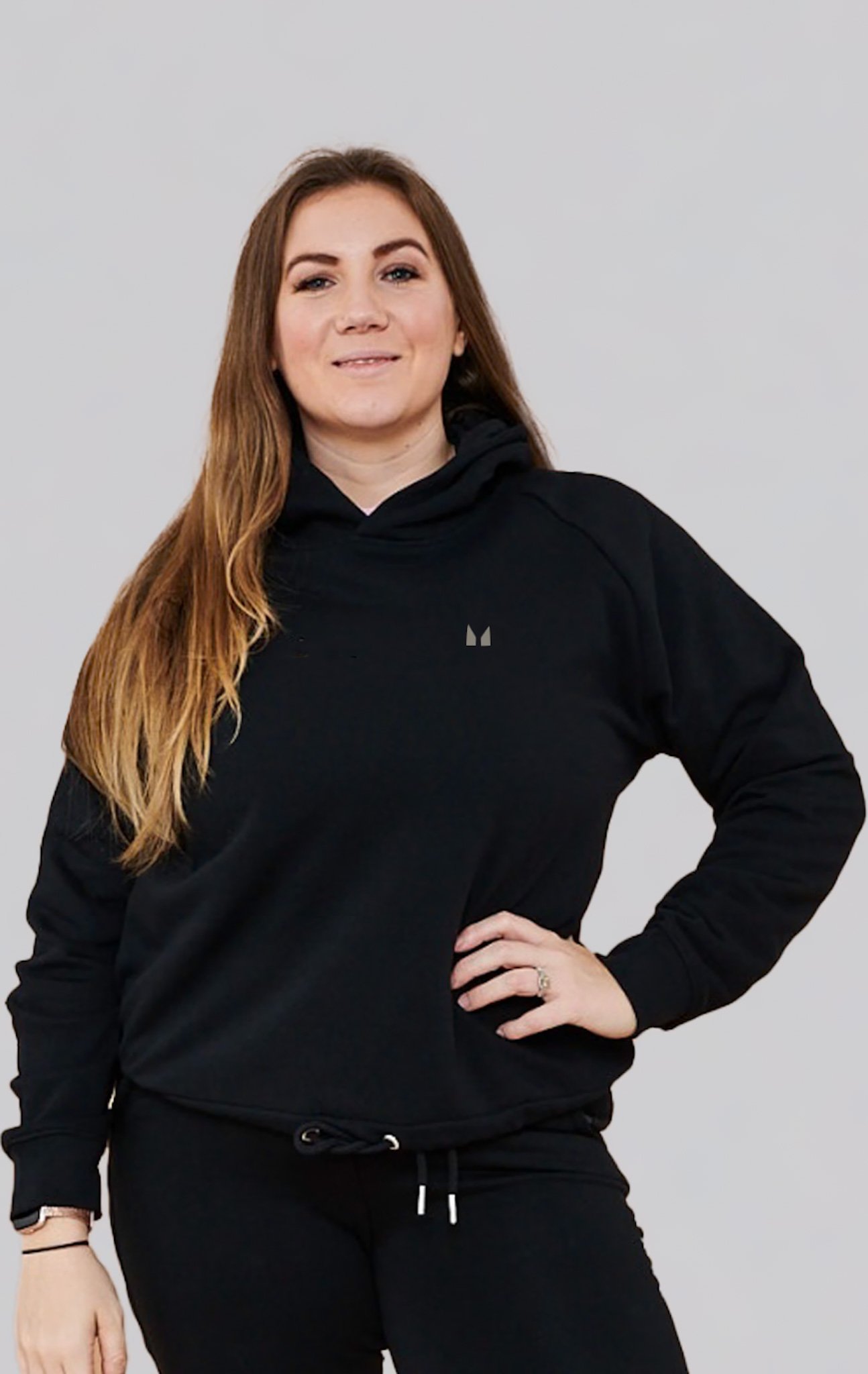
References:
https://onlinelibrary.wiley.com/doi/abs/10.1002/ejsp.674
European Journal of Social Psychology
How are habits formed: Modelling habit formation in the real world
Phillippa Lally, Cornelia H. M. van Jaarsveld, Henry W. W. Potts, Jane Wardle


